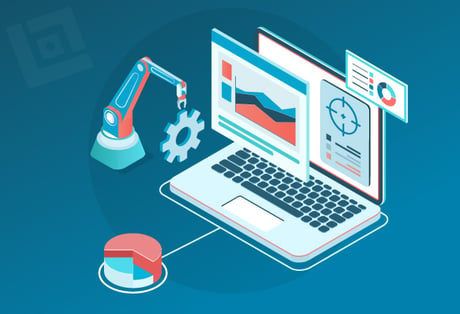
For all our metrics, test plans, Agile approaches, and strict industry standards, the end goal of every software development project is the same: happy customers. The user experience is our definition of success.
The design, planning, testing, and re-development that go into an application are all there to ensure the end user can solve their problem using our product. The challenge is to keep this goal in mind every step along the SDLC. The temptation is to embrace speed to reach a deadline or to limit testing to reduce the budget impact, but these decisions all have user-experience consequences. Additionally, incorporating ethical and responsible AI practices further enhances the overall user experience and ensures the responsible deployment of artificial intelligence technologies.
Instead, we must embrace the benefits we gain by executing best practice standards in everything we do. This is especially true for the test data management tools that define the quality of our test environment.
The Benefits of Test Data Management Tools
The test management tools we implement go a long way toward increasing the success of our QA and, ultimately, the usability of our product. Investing in the right product is like taking out reputation insurance; it allows us to complete comprehensive and effective testing faster and with better use of our resources. The right solution has to comprehensively explore and validate the test data, ensure its readiness for reusability, and help speed up the QA process by maximizing automation.
The list of potential benefits includes:
- Cost reduction
- Increased delivery speed
- Risk and liability mitigation
- Increased compliance and regulation adherence
All these factors feed back into the user experience by maximizing the use of our resources and ensuring that our final product meets and exceeds industry and user expectations.
The importance of the technology is reflected in the popularity and diversity of test data management tools currently available.
Selecting the Right Test Data Management Tool
As with any facet of the SDLC, you should always take an agnostic approach to test data management tool selection. The available options are varied enough to match your unique application and resource needs to a product rather than trying to shoehorn in a “most popular” solution. Integrating AI-driven features into test data management tools can enhance adaptability and efficiency in handling diverse data scenarios.
We have outlined a few of the leading options below to get you started on your data management tool search.
Functionize
This web and mobile testing suite uses AI to generate scriptless automation regression tests. The primary benefit is speed, as you can write tests in plain English and have them converted by the software, reducing test creation time and making maintenance easier.
Appvance.ai
Another scriptless, AI-powered web tool that promises time savings by making the operation as user-friendly as possible. It is used by some big names, including Sony and Cisco, to free up your human resources by limiting their time spent creating test scripts.
Test.ai
This mobile testing tool again uses machine learning to smooth the test script creation process within the Appium and Selenium frameworks. Popular with UI automation.
Applitools
A UI specialist leverages an AI-driven test automation platform, empowering developers and QA teams to continuously test and monitor all aspects of an app throughout the development cycle. The platform integrates seamlessly with cloud-based tools like Selenium and provides a Visual AI validation engine for scalable UI testing.
Froglogic
A cross-platform tool that works on web, mobile, and embedded, it is among the most popular choices for automated GUI regression testing.
Each of these test data management solutions is designed to reduce the human toll of repetitive regression testing and to make automation more accessible, which leads to the question:
What Can You Automate with Test Data Management Tools?
Test data automation is dedicated to streamlining the process of designing, storing, and managing the source codes for testing. In short, this is anything that has to do with the preparation and execution of automated tests, which extends to:
- Data Generation: Automatically create test data that simulates real-world scenarios, enabling thorough testing without manual data creation. This process ensures diverse data inputs, from simple to complex datasets, facilitating comprehensive testing coverage across test cases.
- Data Masking: Secure sensitive information by obscuring absolute data values with fictional yet plausible alternatives. This is crucial for maintaining privacy and compliance, especially when dealing with personally identifiable information (PII), financial records, or any data subject to regulatory standards like GDPR or HIPAA. Automated data masking helps create a safe testing environment without compromising data integrity.
- Data Scrambling: Similar to data masking, but focusing on altering data to remain usable for testing. It cannot be reverse-engineered to reveal the original information. This technique protects the original data set while providing realistic test data reflecting true-to-life scenarios and challenges.
- Data Refreshing: Maintain the relevance and accuracy of your test data with automated updates. This ensures that the test environment reflects the latest changes in the production environment or requirements. Data refreshing is essential for agile development practices, where continuous integration and continuous deployment (CI/CD) necessitate up-to-date data for accurate testing outcomes.
As it gives you complete control over all the files in use and the rules that govern their use, and as it dictates report generation, test data automation defines your testing environment. Therefore, selecting the right data management test tool for your SDLC is pivotal to your QA success. To top it off, there is a new emphasis on making the process user-friendly enough to involve more project stakeholders who can easily operate the system.
However, as with any facet of QA, you get your best results when the test data management tool is in the hands of a dedicated expert.
What are Some Potential Challenges and Pitfalls of Test Data Management?
While test data management solutions offer numerous benefits, navigating their complexities can present challenges:
- Data Privacy and Compliance: Ensuring test data complies with legal and regulatory requirements, especially when using real user data, can be complex. Mismanagement can lead to privacy breaches and legal consequences.
- Data Relevancy and Quality: Maintaining the relevance and quality of test data over time is crucial. Outdated or low-quality data can lead to inaccurate testing outcomes and mislead development efforts.
- Test Data Environment Configuration: Setting up and maintaining a test data environment that accurately reflects production environments requires significant effort and expertise, often leading to resource strains.
- Data Security: Protecting test data from unauthorized access is essential, especially for sensitive or proprietary information. Failure to secure test data can expose vulnerabilities to external threats.
- Scalability: As projects grow, so does the need for test data. Managing large volumes of data efficiently, maintaining performance and speed poses a significant challenge.
Addressing these challenges requires a strategic approach, including investing in robust test data management best practices, to ensure that the tools and processes are clear to the quality assurance process.
Best Practices for Implementing Test Data Management Tools
Implementing test data management (TDM) solutions effectively is crucial for maximizing their benefits while mitigating potential pitfalls. Here are the best practices to consider:
- Establish Clear Goals: Define what you aim to achieve with your TDM strategy, including compliance, data quality, and efficiency.
- Prioritize Data Privacy and Security: Implement robust security measures to protect test data, especially when using sensitive or real user data.
- Ensure Data Relevancy: Regularly update and validate your test data to reflect real-world scenarios accurately.
- Opt for Scalable Solutions: Choose test data management tools that can grow with your project needs, ensuring they can handle increasing data volumes efficiently.
- Invest in Training: Equip your team with the knowledge to leverage TDM tools effectively, emphasizing the importance of ongoing learning as tools and best practices evolve.
Incorporating these practices can help organizations navigate the complexities of test data management, ensuring a robust, efficient, and compliant QA process.
Future Trends in Test Data Management
As technology evolves, so do the trends in test data management. Staying ahead of these trends is key to leveraging TDM tools for maximum effectiveness:
- AI and Machine Learning: AI-driven solutions for generating and managing test data are becoming increasingly sophisticated, offering more accurate and efficient test environments.
- Cloud-Based Platforms: Adopting cloud services for TDM offers scalability and flexibility, allowing teams to access and manage test data from anywhere.
- Data Virtualization: Virtualizing test data management enables quicker access to test environments, reducing the time and resources required for testing.
- Shift-left Testing: Integrating TDM tools earlier in the development cycle helps identify issues sooner, improves quality, and reduces time spent on the market.
Staying informed about these trends allows teams to make strategic decisions about implementing TDM solutions, ensuring they remain competitive and efficient.
Outsourcing to an Expert Set of Eyes
Sometimes, you can know your product too well. The core team that takes your application from design through launch can be clouded in their user experience evaluation. Instead of an objective view, their test efforts can be impaired by what they know the application is designed to achieve.
Outsourcing your QA to an AI-powered solution introduces a fresh and expert approach. AI, equipped with the latest test data management tools and trends, can design and implement a system that optimizes data integrity and scrutiny while prioritizing the end user's experience.
Beyond the benefits of cost reduction and faster delivery, an AI-based QA partner can push your product to its limits in the relentless pursuit of the perfect user experience.
Conclusion
Implementing effective test data management solutions is essential for enhancing QA processes and ensuring the delivery of high-quality software. Organizations can leverage test data management tools to their full potential by following best practices and staying abreast of future trends. With the right approach and tools, such as those offered by QASource, businesses can ensure their products meet and exceed user expectations, reinforcing customer satisfaction as the ultimate measure of success.
QASource’s team of more than 1100 engineers has partnered with some of the world’s leading companies to deliver products that compete within the most competitive application development markets. Our team takes an agnostic approach to each project, which means we use our industry knowledge to match your application with the best possible test data management tools.


